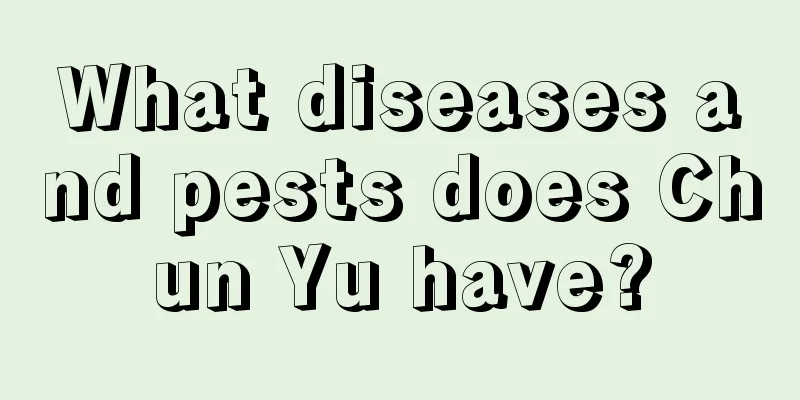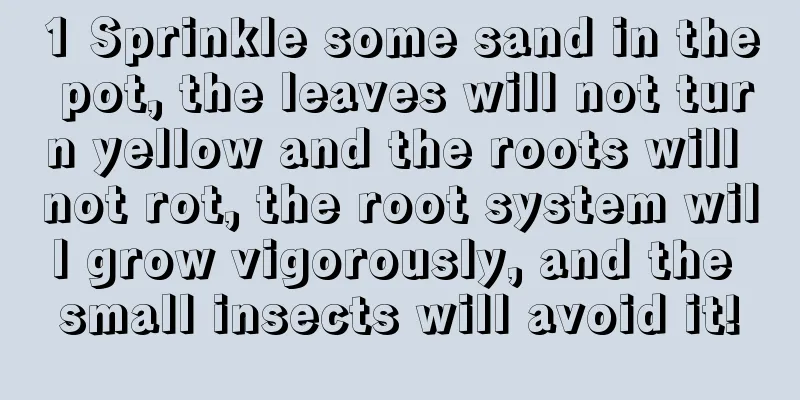What diseases and pests does Chun Yu have?

Symptoms of Spring Feather Diseases and PestsThe main symptoms of diseases and pests of spring fern include yellowing of leaves, withering of leaves, scorching of leaves, and scars on leaves. In addition, there are obvious signs of insect bites. In short, the appearance and symptoms of diseases and pests of spring fern are obvious and easy to detect, but prevention is better than cure. Try not to wait until symptoms appear before treatment. Therefore, it is necessary to understand the common types of diseases and pests of spring fern and the prevention methods, with prevention as the main approach and treatment as the auxiliary approach. Types of diseases and pests of spring feathersGenerally speaking, plant pests and diseases are divided into diseases and insect pests. Common diseases of spring fern include leaf spot, anthracnose, etc. Relatively speaking, leaf spot is more common than anthracnose. The main symptoms of spring feather leaf spot disease are nearly circular leaf spots, brown to reddish brown, dark brown edges, yellow halos on the outside, faint reddish-brown rings on the spot surface, and needle-sized spots clustered on the spots. Common insect pests of spring fern include red spider mites and scale insects. Relatively speaking, scale insects are more common than red spider mites. The reason for the appearance of red spider mites is most likely low air humidity, while the reason for the appearance of scale insects is most likely poor ventilation. Treatment methods for spring feather diseases and pestsFor diseases such as spring feather leaf spot and anthracnose, wettable powders such as polychlorbide, methyl thiophanate, and mancozeb can be used for prevention and control. Leaf spot is more common than anthracnose. Specifically, leaf spot disease needs to be prevented and controlled by spraying 1000 times diluted 50% polychlorinated fungus. For pests such as spring red spider mites and scale insects, you can spray special pesticides for prevention and control. Specifically, scale insects need to be controlled by spraying 1000 times diluted 50% oxydemeton-methyl emulsifiable concentrate. In addition, when preventing red spider mites, it is necessary to increase the air humidity, and scale insects can be prevented by increasing ventilation. In addition, if the leaves appear yellow, dry or burnt, they need to be pruned in time. |
<<: You must plant a flower wall in this life. These 19 plants are perfect for it.
Recommend
How to propagate Campanula
Seed propagation of Campanula One of the main met...
Hongyun Dangtou Four Seasons Maintenance
Spring maintenance for a good year In early sprin...
Causes and treatments of yellow leaves of crape myrtle
1. Natural Aging Reason: Metabolism is the most c...
55 must-know tips for growing succulents, words of love and tears from a succulent grower with 20 years of experience!
getting Started 1. Getting started is a process f...
What are the cultivation methods and precautions of money trees?
How to grow a money tree The money-making plant l...
Why does Echeveria luxuriantii drop its leaves?
reason Normal metabolism As the Echeveria Lui gro...
Is cinnamon the same as cassia bark? What is the difference between cinnamon and cassia bark?
1. Different appearance The outer surface of cinn...
Cultivation methods and precautions of chestnut trees
1. Soil Chestnut trees are suitable for cultivati...
Can Bauhinia seeds be planted?
Can Bauhinia seeds be planted? Bauhinia seeds can...
Succulent roses...From toothpick seedlings to bursting pots, it only takes 30 days!
Succulent Succulents are not as fragile as everyo...
Will clematis freeze to death in winter?
1. Can you freeze to death? Most clematis are ver...
How to take care of the newly bought morning glory
1. How to deal with newly bought morning glory Wh...
How many days does it take for lettuce to germinate?
Lettuce is a widely cultivated vegetable . The ma...
Cultivation methods and precautions of black heart chrysanthemum
How to grow black chrysanthemum soil Rudbeckia ha...
Can peach seeds be planted?
Can peach seeds be planted? The seeds of the peac...









